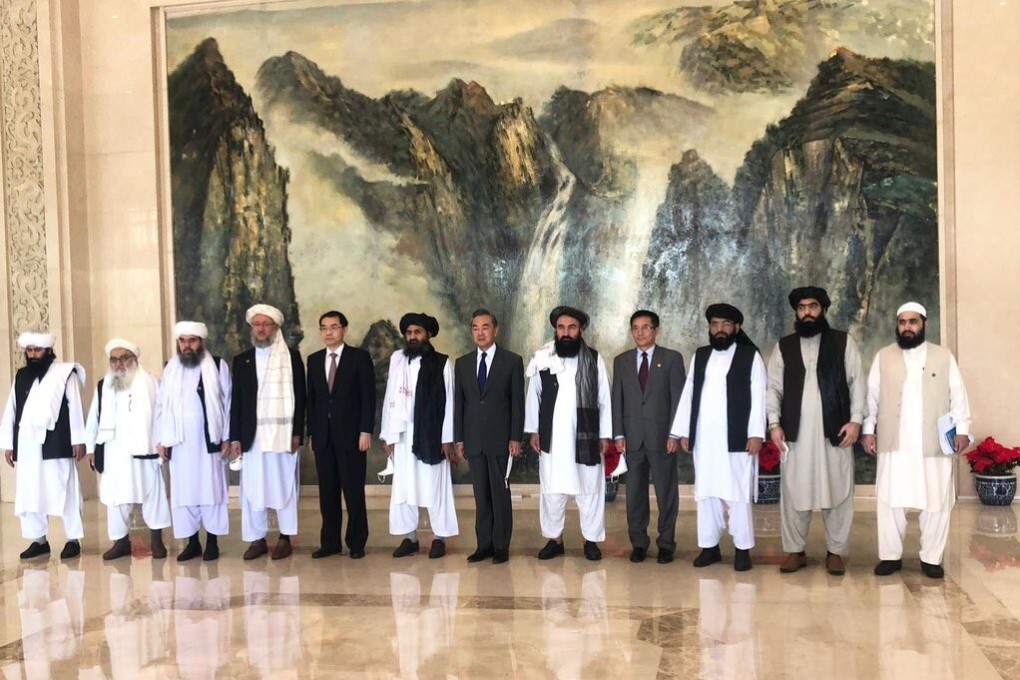Afghan Solution and China’s Reconciliation Formula

Introduction
The political stability of Pakistan, both internally and regionally, is intricately linked to a peaceful resolution of the Afghan crisis. The relationship between Pakistan and Afghanistan has been fraught with challenges, particularly concerning mutual distrust and recurring issues. The fundamental problem lies in the activities of the Tehrik-i-Taliban Pakistan (TTP), which operates against Pakistan from Afghan soil. This reality underscores the urgency for both nations to engage in constructive dialogue aimed at fostering mutual cooperation and trust.
Historical Context of Pakistan-Afghanistan Relations
Historically, Pakistan and Afghanistan have shared a complex and often contentious relationship. The Durand Line, drawn in 1893, has been a significant point of contention, as Afghanistan has never formally recognized this boundary. This legacy of distrust has been exacerbated by various geopolitical influences, particularly during the Cold War and the post-9/11 era.
During the Soviet invasion of Afghanistan in the 1980s, Pakistan supported the Mujahideen, which laid the groundwork for the Taliban’s emergence in the 1990s. Following the U.S.-led invasion of Afghanistan in 2001, Pakistan’s role as a key ally of the United States further complicated its relationship with the Taliban and other Afghan factions. The fallout from these historical events continues to influence contemporary politics, as Afghanistan grapples with its internal divisions and external pressures.
The Role of the TTP in the Current Dynamics
The TTP has become a primary source of tension between Pakistan and Afghanistan. With a base in Afghanistan, the TTP has conducted numerous attacks in Pakistan, leading to significant loss of life and property. These actions have strained diplomatic relations, as Pakistan holds the Afghan government responsible for not curtailing the TTP’s activities.
Despite calls from Pakistan for decisive action against the TTP, the Afghan Taliban’s reluctance to address this issue reflects deeper political calculations. The Afghan government may perceive the TTP as a potential ally in its broader strategy against Pakistan, thereby complicating bilateral relations. This situation necessitates a comprehensive approach that transcends mere rhetoric and focuses on actionable strategies to mitigate the threats posed by militant groups.
China’s Proposals for Afghan Stability
Recent diplomatic efforts have highlighted the importance of regional cooperation in addressing the Afghan crisis. During the UN General Assembly, Chinese Foreign Minister Wang Yi presented four key proposals aimed at fostering stability in Afghanistan and enhancing cooperation between regional stakeholders. These proposals underscore China’s interest in promoting peace and stability in the region, which is vital for its broader geopolitical ambitions.
1. Enhancing Security Cooperation:
The first proposal emphasizes the need for regional countries to collaborate on security matters. This includes strengthening intelligence sharing and law enforcement cooperation to combat violent extremist groups operating in Afghanistan. By working together, countries can create a more secure environment that deters terrorism and fosters stability.
2. Promoting Reconstruction and Development:
The second proposal focuses on the necessity of joint efforts to rebuild Afghanistan. Economic stability is crucial for long-term peace, and regional nations must invest in development projects that address the needs of the Afghan population. This cooperation could take the form of infrastructure development, healthcare initiatives, and educational programs that provide opportunities for Afghan youth.
3. Establishing a Platform for Cooperation:
The third proposal calls for Afghanistan to become a platform for cooperation among regional players rather than a battleground for geopolitical rivalry. This shift in perspective is essential for fostering collaboration and mutual understanding among countries with vested interests in Afghanistan’s future.
4. Encouraging International Attention to Afghanistan’s Challenges:
The final proposal urges the international community to prioritize Afghanistan’s pressing issues. This includes addressing humanitarian crises, supporting refugees, and providing assistance for rebuilding efforts. A unified approach involving regional and international actors can create a sustainable framework for Afghanistan’s recovery.
Geopolitical Implications of China’s Role
China’s growing involvement in Afghanistan has significant geopolitical implications. As a rising global power, China’s engagement in regional issues reflects its broader strategy of expanding influence through economic partnerships and diplomatic initiatives. The China-Pakistan Economic Corridor (CPEC) serves as a critical component of this strategy, linking Pakistan’s Gwadar Port with China’s Xinjiang province.
By promoting stability in Afghanistan, China seeks to secure its economic investments in Pakistan and the broader region. A peaceful Afghanistan would facilitate trade routes and improve connectivity, aligning with China’s Belt and Road Initiative (BRI). This interconnectedness underscores the importance of regional cooperation in addressing mutual challenges.
The Importance of Dialogue and Diplomacy
In light of the complexities surrounding the Afghan crisis, it is imperative for Pakistan and Afghanistan to engage in dialogue and diplomacy. Both nations must recognize their interdependence and the need for collaborative solutions. The ongoing jirgas (tribal assemblies) in Khyber Pakhtunkhwa hold the potential to foster consensus among tribal leaders and reinforce commitments to regional stability.
These assemblies can serve as a platform for discussing shared security concerns and outlining common objectives. By establishing a united front against violent extremism, Pakistan and Afghanistan can demonstrate their commitment to peace and cooperation.
Furthermore, Pakistan should leverage its diplomatic relations with China and other regional powers to advocate for a comprehensive approach to the Afghan crisis. A regional conference involving all stakeholders, including Afghanistan’s foreign minister, can facilitate discussions on shared interests and strategies for addressing the challenges posed by the TTP and other extremist groups.
Challenges and Opportunities Ahead
While the proposals presented by China offer a promising framework for addressing the Afghan crisis, challenges remain. The historical distrust between Pakistan and Afghanistan must be overcome to build a lasting partnership. Both countries need to move beyond blame and focus on constructive solutions that prioritize the welfare of their citizens.
Moreover, external influences, particularly from India and the United States, can complicate the dynamics of regional cooperation. India has traditionally viewed Pakistan’s influence in Afghanistan with suspicion, leading to a complicated triangular relationship. However, engaging India in the dialogue could create opportunities for broader regional stability.
Conclusion
The Afghan crisis presents a multifaceted challenge that requires a collaborative and inclusive approach. China’s proposals for enhancing security cooperation, promoting reconstruction, and encouraging international engagement provide a solid foundation for regional stability. By prioritizing dialogue and diplomacy, Pakistan and Afghanistan can work towards resolving their differences and fostering a peaceful coexistence.
As the situation evolves, it is crucial for all stakeholders to remain committed to finding sustainable solutions. The consequences of inaction are dire, not only for Pakistan and Afghanistan but for the broader region. A united effort is essential to ensure that the Afghan crisis does not become a catalyst for further instability, ultimately impacting global peace and security.








